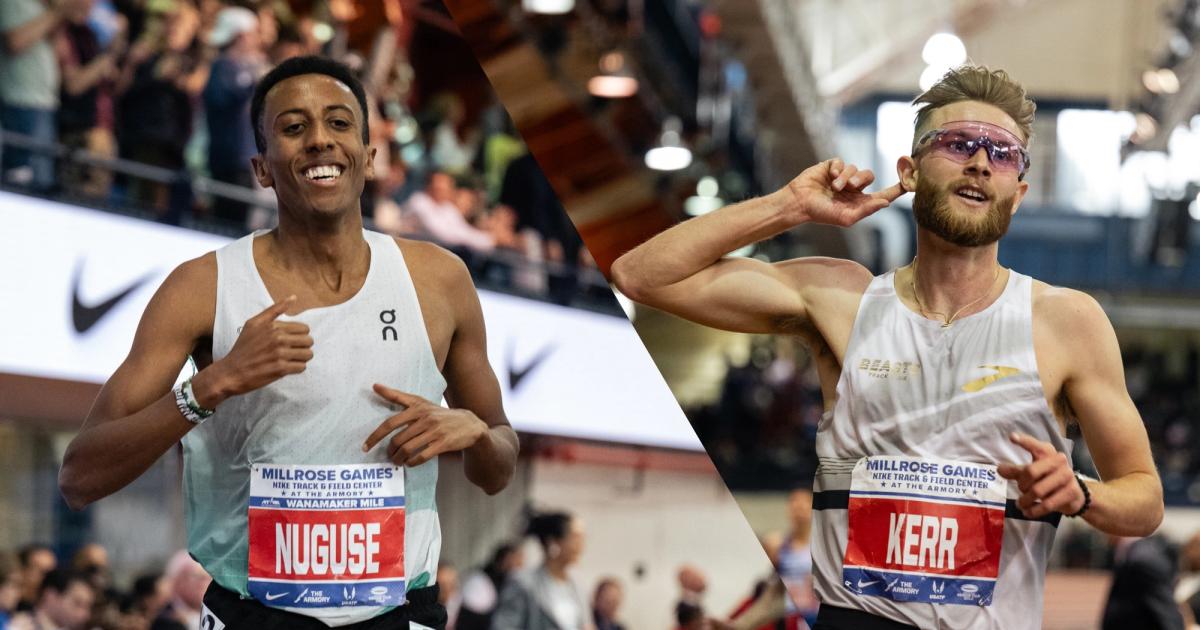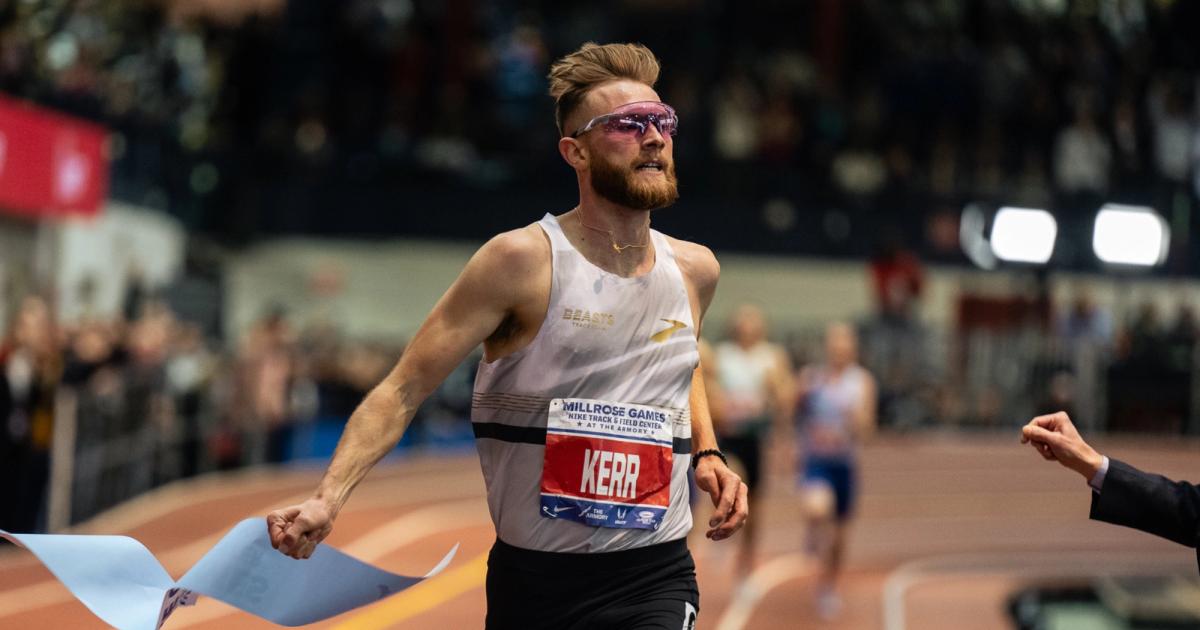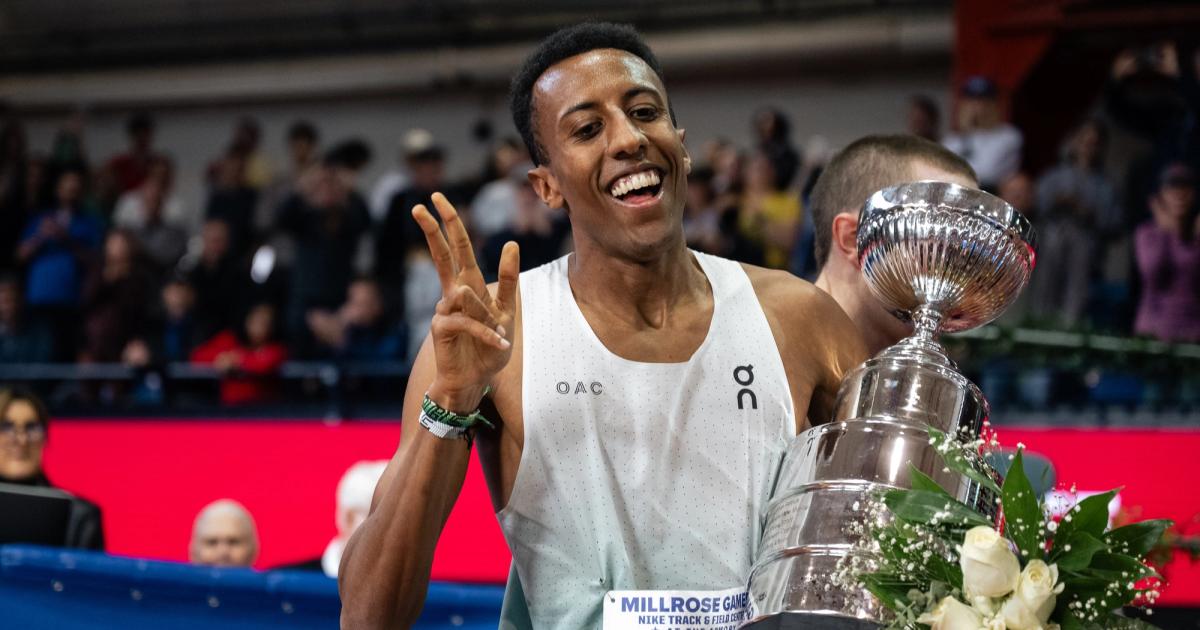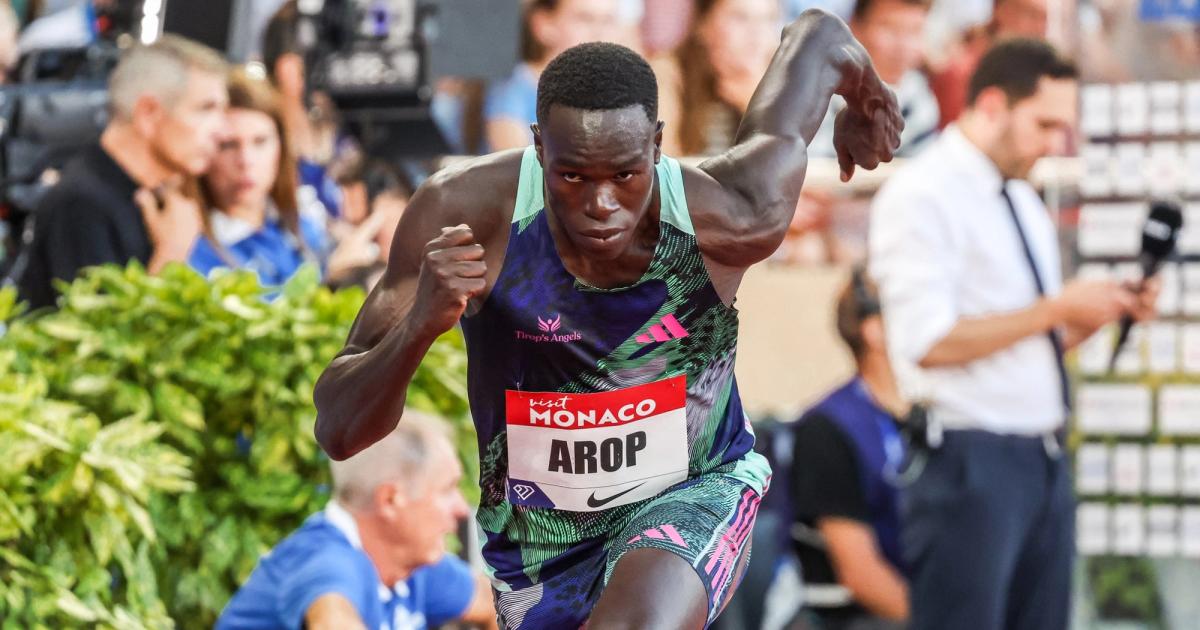By David Melly
January 15, 2025
The more things change; the more they stay the same.
For the first time in 2025 and possibly the forty-fifth time in the last few years, reigning World 1500m champion Josh Kerr and reigning Olympic 5000m champion Jakob Ingebrigtsen are chirping at each other in the media. This round of trash-talking was started by Kerr—one of the biggest names signed to the Grand Slam Track league—when on the CITIUS MAG podcast he mused about Ingebrigtsen and the GST format:
“I think it’s smart that he didn’t sign up, to be honest… in any non-paced race in the last few years, he hasn’t won. And so if you’re gonna throw him in a lot of non-paced races, it’ll seem silly and it’s going to expose most of his tactical stuff. If he was in the 800/1500 group, watching him run the 800 would be like a deer on ice.”
Ingebrigtsen had a terse, but telling, response locked and loaded when asked by a Norwegian publication about Kerr’s comments:
“The day he contributes to world record racing, I'll take him seriously. But only then.”
Two of the most decorated middle distance runners of the decade reigniting their rivalry in the media is nothing new. These two clearly haven’t made “burying the hatchet” a New Year’s resolution, and Kerr persevering in two of their three matchups in 2024 has only deepened their on-track animosity (Ingebrigtsen maintains the lifetime edge at 9-3 over the mile and 1500m distances). But embedded in their chippy back-and-forth is a critical truth about track and field: legacy and rivalry both are dramatically shaped by the competition format.
With this latest round of barbs, Kerr and Ingebrigtsen aren’t in conversation with one another, literally or metaphorically. They’re really talking about the nature of racing itself. Kerr’s argument is that Jakob needs to hide behind the comfort of Diamond League pacing to win, and so the championship-style racing of GST would not play to his strengths. Jakob is arguing that being the best means running the fastest: full stop. And with three world records (at 2000m, 3000m, and 2 miles) under his belt, he’s already put his legs to work in making his case as the best middle-distance runner in the world.
Anyone who follows the sport more than one weekend a year knows that “who is the best miler in the world?” doesn’t have an obvious answer. An Olympic-centric winner-takes-all perspective would suggest that Cole Hocker was the best 1500m runner in the world in 2024. But Hocker raced four DL races last year and didn’t win a single one, including two head-to-head losses to Ingebrigtsen. Jakob was the fastest 1500m runner in the world in 2024, but finished fourth in Paris. And Kerr picked up a silver medal and a few big wins but didn’t have a signature performance.
Michael Johnson and GST are betting that they have a new way of answering the “who’s the best” question: take out the Diamond League pacers, put a lot of money on the line, and make everyone race a lot across multiple distances. Should this new league become the premier format for elite track and field, a runner like Jakob may not seem quite as “great” as he does on the Diamond League circuit. That’s the sort of reputational shift that can happen when the criteria for success faces an overhaul, even if the major players and the tools at their disposal remain unchanged.
In a hypothetical world where GST features a 1500m/5000m event group, the 3:26 guy who’s won the last three global titles over 5000m is probably going to thrive, pacers or no. But Jakob’s riding a string of global championship 1500m disappointment, hasn’t raced an 800m in over two years, and only boasts a 1:46.44 PB from back in 2020. That PB is certainly ripe for the rewriting, but Ingebrigtsen hasn’t exactly become known for venturing outside his comfort zone.
And so, we’re talking just a little bit less about what it might take for Ingebrigtsen to take down the likes of Hocker, Kerr, and Yared Nuguse, and instead are being treated to our first round of contentious “Marco Arop versus Nuguse” discourse. That certainly wasn’t exactly a talking point on anyone’s radar until a few months ago. And 800m runners aren’t a monolith unto themselves – a guy like Arop who’s comfortable running a strong 1000m is a much better fit for GST than a 400m/800m specialist who can barely hang on to the final steps of his second lap.
Josh Kerr and Jakob Ingebrigtsen are both pulling at threads from different directions that, if extended further, could unravel the fabric of how greatness is defined in the sport. One of the highest bars that GST is attempting to clear is fundamentally changing the way we think about success, and clearly Kerr is all-in on the notion that GST’s new perspective will beef up his legacy.
It’s safe to say that, regardless of how and where either man toes the starting line, their love-hate relationship (or maybe just “hate-hate” relationship) will still be front and center in their comments and coverage. But who comes out on top in this feud will depend not just on performance but circumstance, public perception, and the evolving culture of track and field itself.

David Melly
David began contributing to CITIUS in 2018, and quickly cemented himself as an integral part of the team thanks to his quick wit, hot takes, undying love for the sport and willingness to get yelled at online.




